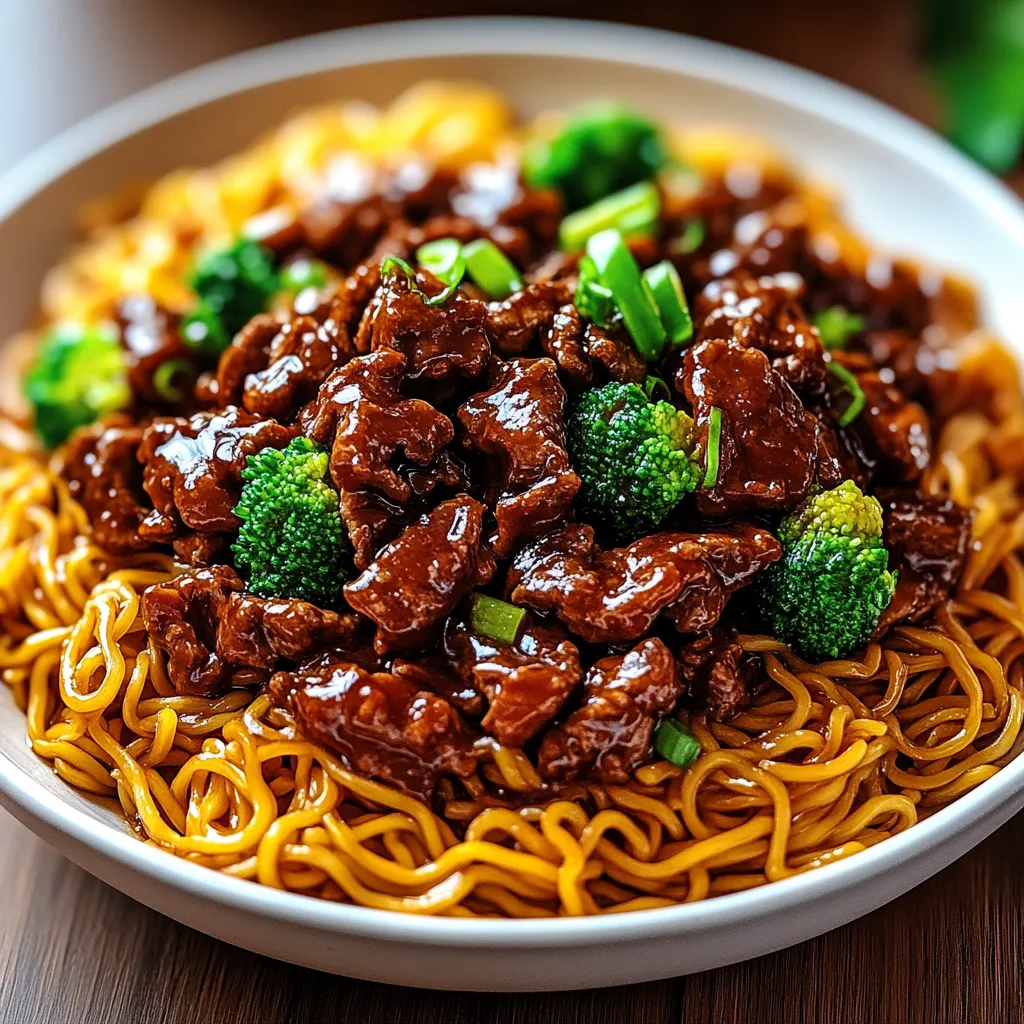 Pin
Pin
Sticky Beef Noodles transform simple ingredients into an irresistible Asian-inspired dish that brings restaurant-quality flavors right to your dining table. The combination of tender beef strips and chewy noodles, all enveloped in a rich, glossy sauce, creates a memorable meal that's both satisfying and impressive.
I've made this recipe countless times, and it never fails to impress. My family particularly loves how the sauce creates that perfect sticky coating on both the noodles and beef, making every bite absolutely delicious.
Essential Ingredients
- Rice noodles: Their tender texture absorbs flavors beautifully; look for wide, flat varieties
- Beef sirloin/flank steak: Choose well-marbled cuts and slice against the grain for tenderness
- Cornstarch: Creates a protective coating that helps beef stay juicy
- Fresh ginger and garlic: Essential aromatics; always use fresh for authentic flavor
- Hoisin sauce: Provides depth and sweetness; select authentic Asian brands
- Sesame oil: Adds nutty aroma; a little goes a long way
Step-by-Step Instructions
- Step 1:
- Prepare noodles according to package instructions until just al dente
- Step 2:
- Coat sliced beef thoroughly with cornstarch for that signature crispy exterior
- Step 3:
- Sear beef in batches to ensure proper browning and prevent overcrowding
- Step 4:
- Stir-fry vegetables until tender-crisp, maintaining their vibrant colors
- Step 5:
- Combine sauce ingredients until smooth before adding to the pan
- Step 6:
- Toss everything together over high heat until the sauce thickens and coats evenly
I particularly appreciate ginger in this recipe - it's been a staple in my kitchen for years. My grandmother always said ginger was the secret to both flavor and health in Asian cooking.
Storage and Make-Ahead Tips
- Prep vegetables up to 24 hours in advance
- Slice beef while partially frozen for easier cutting
- Store sauce components separately until ready to cook
- Leftovers keep well for lunch the next day
Professional Chef Notes
- Velveting the beef (coating with cornstarch) ensures tender meat
- Adding a splash of hot water to thick sauces helps achieve perfect consistency
- Cooking noodles slightly underdone allows them to finish in the sauce without becoming mushy
This recipe has become one of my most requested dishes, proving that homemade Asian cuisine can be both accessible and authentic. The key lies in respecting the ingredients and maintaining high heat throughout the cooking process - it's what gives this dish its characteristic wok hei flavor that we all love.
Common Recipe Questions
- → Can I use other types of noodles?
- Yes, you can use lo mein, udon, or even gluten-free rice noodles.
- → How do I store leftovers?
- Store leftovers in an airtight container in the fridge for up to 3 days.
- → Can I add more vegetables?
- Absolutely! Add snap peas, carrots, or baby corn for extra variety.
- → Is this recipe gluten-free?
- It can be made gluten-free by using gluten-free soy sauce and noodles.
- → What can I use as a substitute for hoisin sauce?
- You can substitute hoisin sauce with a mix of soy sauce, peanut butter, and a touch of honey.
